Nan Province: Reasons For The Thai Style Slow Life Retreat
Nan, in northern Thailand, is a hidden gem waiting to be discovered. Its lush green mountains and serene atmosphere offer a refreshing escape from city life’s busy and lively scene. The region’s unique character and “laid-back” philosophy make it a must-visit for those seeking an authentic Thai experience.
If you are planning to travel to Nan from Chiang Mai by motorbike, then check out our other guide called Nan Loop. In this guide you will find a detailed itinerary for the trip, including stops and reviews of the attractions that you will encounter along the way.
Besides, the north is renowned for its beautiful nature and cool climate, which offer a great chance to discover and breathe in the forest’s fresh aroma. That said, what should you know about Nan?
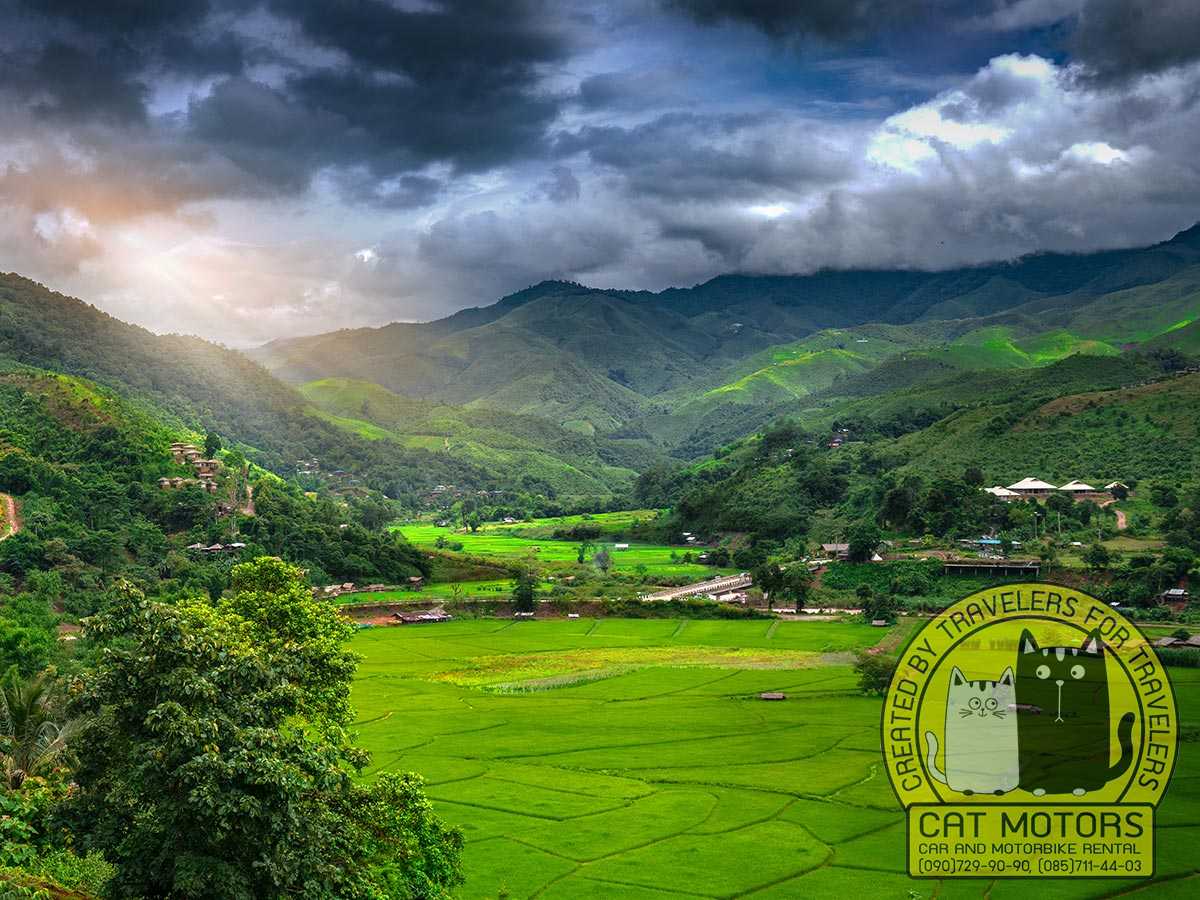
Nan is a province in Northern Thailand that offers a window into the Province’s rich cultural history. With its distinctive blend of Burmese & Lanna-style temples, the Thai Lue’s unique traditions that originated from China, and other beautiful remnants of its ancient past, Nan is a living museum waiting to be explored.
The Province is also home to many undiscovered natural wonders, from pristine waterfalls to lush forests, that will leave you in awe.
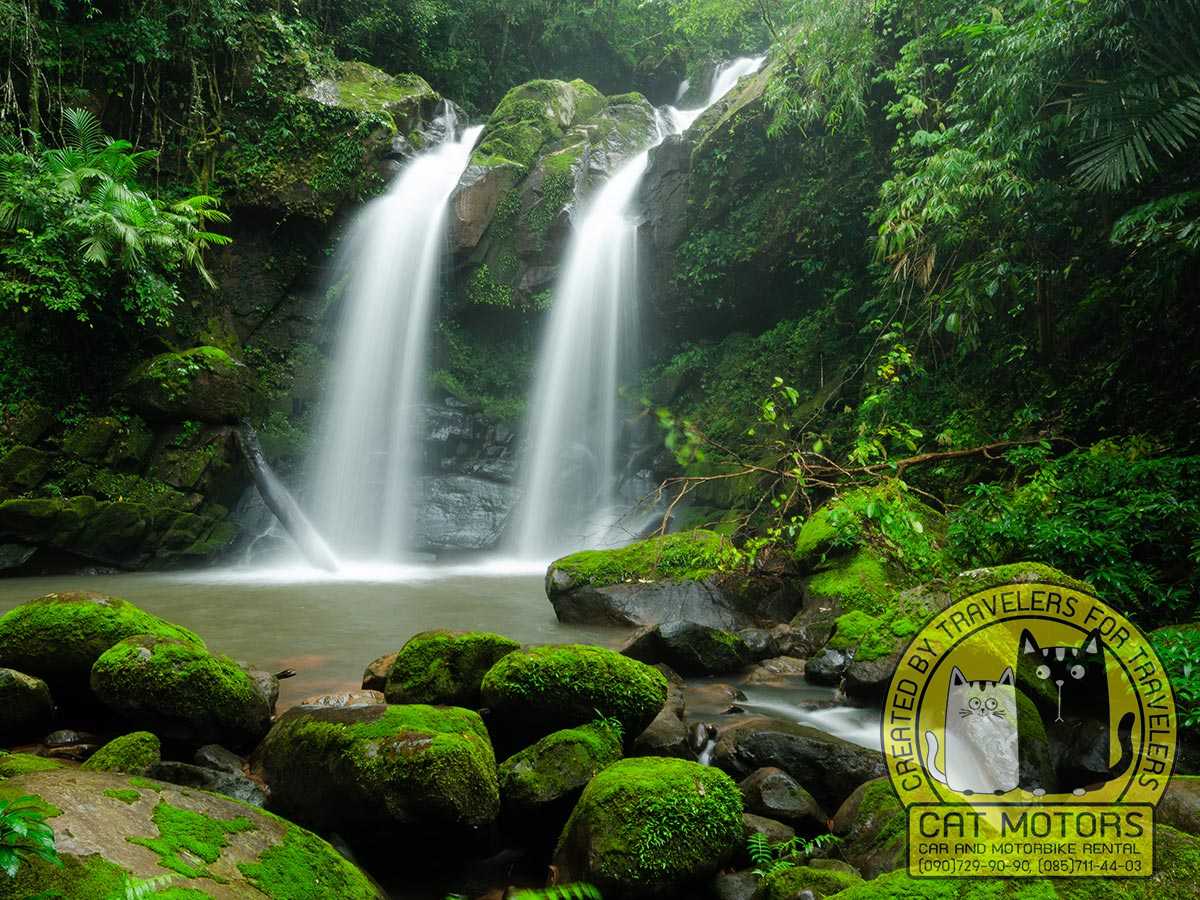
But Nan’s charm doesn’t just lie in its culture and history – the Province is a nature lover’s paradise, offering countless opportunities for both indoor and outdoor activities. And if you’re craving a more immersive experience, homestays in local villages allow you to learn about the practical life and customs of the Thai Lue citizens. So, read on as this guide travels through some of the exciting and best things to know about the area.
Uncovering Nan's Fascinating History And Hidden Treasures
With a unique and rich history that dates back to the 14th century, Nan was once an independent kingdom with solid ties to Laos and was founded by a group of small city-states that joined along the Nan River. Over time, the Province was influenced by the cultures of its neighbors, such as Laos, Burma, and China, but it also developed its own distinctive art and architecture.
The Burmese rule left Nan abandoned for many years, but it gained sovereignty and became a semi-autonomous kingdom to Siam (Thailand) in the 18th century. However, it was not until 1931 that Nan was fully incorporated into Thailand, improving its rich culture and diverse traditions and reviving its economy.

The Province and its history are somewhat a metaphor for what is currently happening in Nan, as it becomes increasingly popular among travelers looking to go beyond Chiang Mai and explore the deeper north of Thailand. Being one of the furthest provinces in Thailand, Nan was also one of the final sections to be fully and officially merged with Siam.
In the 1980s, a highway was completed that linked the provincial capital to the rest of Thailand, which enabled the town to have commerce and tourism. It has good access and a lot of tourist attractions, such as nice national parks, a superb town museum, and historic buildings. However, most of the tourism these days is from the domestic market.
But Nan is still definitely worth adding to any North Thailand travel plan. Foreign travelers have access to a land crossing to Laos in the far north of the Province, and the airport offers daily flights to Bangkok and good roads linked to Phrae in the south and Phayao and Chiang Rai in the west.
How Nan's Rich History Flows To The Present
The ancient city of Nan had sturdy Burmese, Lanna, Tai Lue, and Shan influences. It is in the broad valley of the Nan River with inhabited mountains by hill tribes of Hmong and Yao to the east and west. Khamu, H’tin, and Mlabri (also known as Phi Tong Luang) cultures are usually only located in this northern section of Thailand.
Pua, an ancient town, is north of the provincial capital, with the amazing Doi Phuka National Park nearby. The rare village of Bo Kluea near the Lao border is beyond and makes exploring the Province a worthwhile and fascinating trip.
You can learn more about the Province’s past and culture at the Nan National Museum, where you can see exhibits of royal regalia, weapons, religious artifacts, and ethnic costumes. You can also admire nearby temples’ stunning architecture and art, such as Wat Phumin, famous for its murals depicting scenes of local life and legends.
While hiking outside of the well-maintained national park areas has been strictly shortened, and many hill tribe communities have been moved to lowland areas, visitors can still explore the old town’s markets, great wats, and coffee shops by bicycle and explore the national parks and beautiful hills by renting a motorbike.
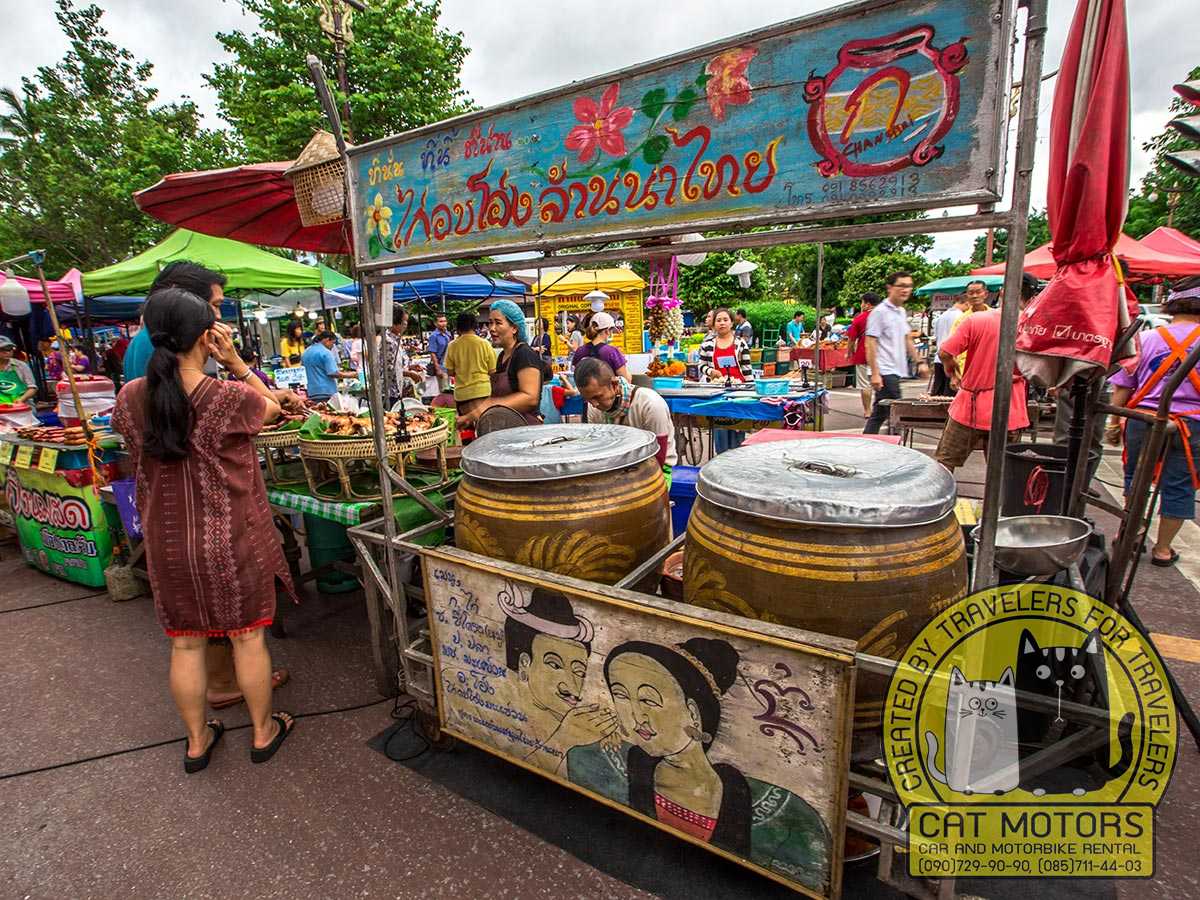
Unveiling The Untouched Wonders Through Nan's Natural Beauty
Travel to Nan to see how it is blessed with a stunning natural environment with plenty of outdoor activities and adventure opportunities. This northern Province in Thailand is diverse and beautiful flora and fauna.
It has forests with teak and bamboo, wetlands with lotuses and water lilies, and grasslands with shrubs. It has many mammals, including elephants and tigers; fish, such as giant barbs and stingrays; and reptiles, such as flying snakes (golden tree snake) and crocodiles. Many national parks, such as Doi Phu Kha, Khun Nan, and Si Nan, protect their natural resources and biodiversity.
- A trip worthwhile is a hike in Doi Phu Kha National Park and experiencing rare plants, animals, caves, and waterfalls. It is also a great place where you learn how they protect the natural biodiversity in the area.
- You can also visit the Nan Riverside Art Gallery (follow them on Instagram) or enjoy panoramic views of the town from the golden Buddha statue at Wat Phra That Khao Noi.
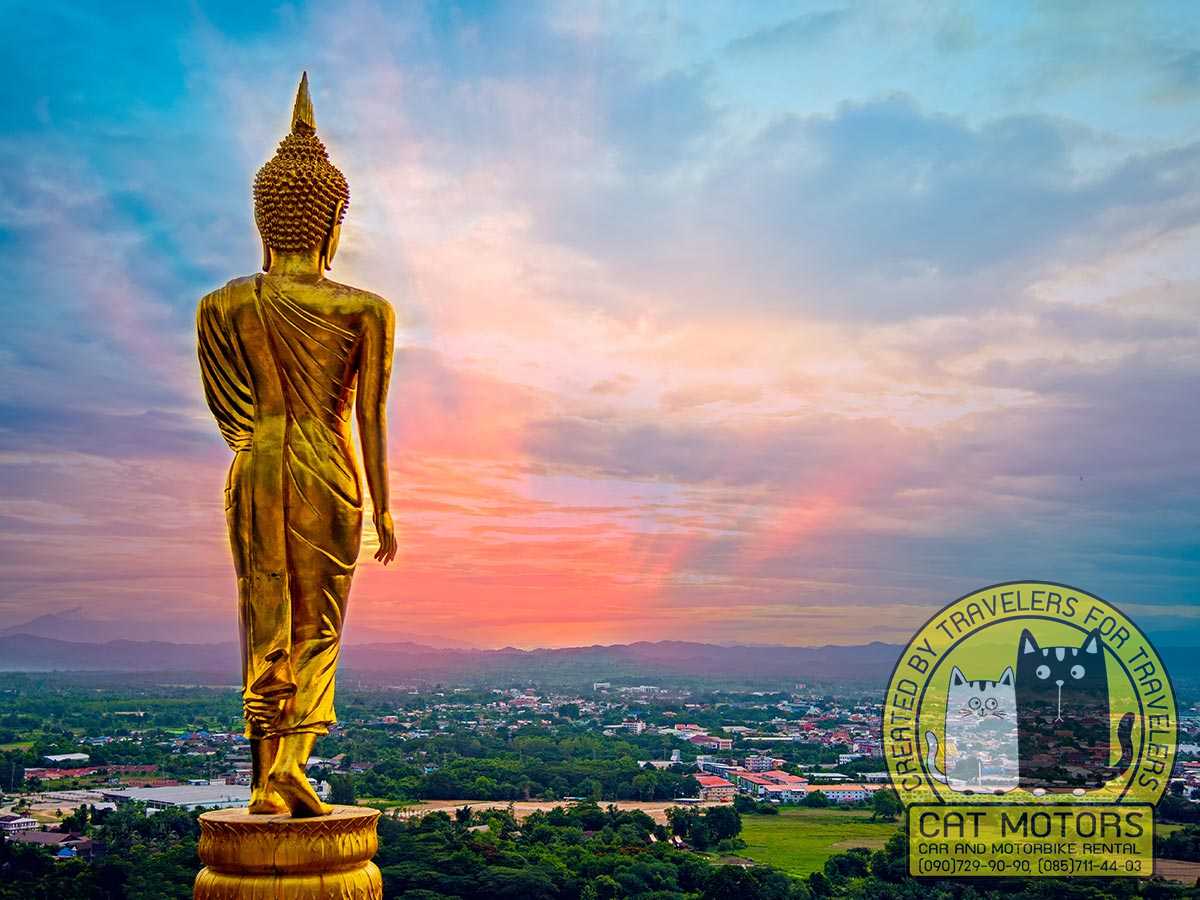
The town itself is pretty easy to navigate, and most places are within a comfortable stroll of each, including hotels and other accommodations, while also enjoying the city market between Sumon Thewarat Street and the river.
But mostly, head out of town to explore the surrounding areas and stop by the tourist information center on Phakong Road for pamphlets and maps provided in English.
And by combining the two, you should be able to devise several well-planned routes both in and around town. As exciting as that already is, let’s delve even deeper into some of Nan’s top attractions, food and drink offerings, and tips for making the of out of your visit.
Discover Nan: Historical Landmarks, Museums, And Outdoor Fun
If you are looking for natural attractions, grand historical encounters, and cultural experiences, then Nan Province is a must-visit destination in Thailand. Explore the old temples, admire the beautiful murals, and enjoy the exciting activities. Here are just a few of the abundant highlights you need to see:
Doi Samer Dao
In the untouched expanse of Nan Province, nestled within the verdant wilderness of Sri Nan National Park, lies a sanctuary for all wayfarers and wanderers: Doi Samer Dao. It presents a spectacle of nature’s grandeur that leaves one entranced, be they drawn to the wilds or the calm of nature’s solace. It’s a tableau of earth and sky, particularly at dawn or dusk, where the heavens are brushed with a palette of fiery red and molten gold, whilst a sea of mist dances over the treetops, conjuring a scene of such ethereal beauty that it borders on the fantastical.
By daylight, Doi Samer Dao unveils its lush, labyrinthine nature trails, meandering through a forest laden with whispering pines, where one can cross paths with the manifold wildlife that call this haven home. For those souls with an undying ember of adventure, the mountain peak calls. It demands an ascent of determination and sweat, yet rewards the victors with a spectacle that dwarfs all toil and strife. And when the sun surrenders to the night, Doi Samer Dao reveals its final gift. The celestial canvas, unperturbed by the garish glare of civilization, unveils the Milky Way in all its stellar splendor. On a moonless night, one can witness the celestial river adorning the firmament, a sight that humbles and inspires.
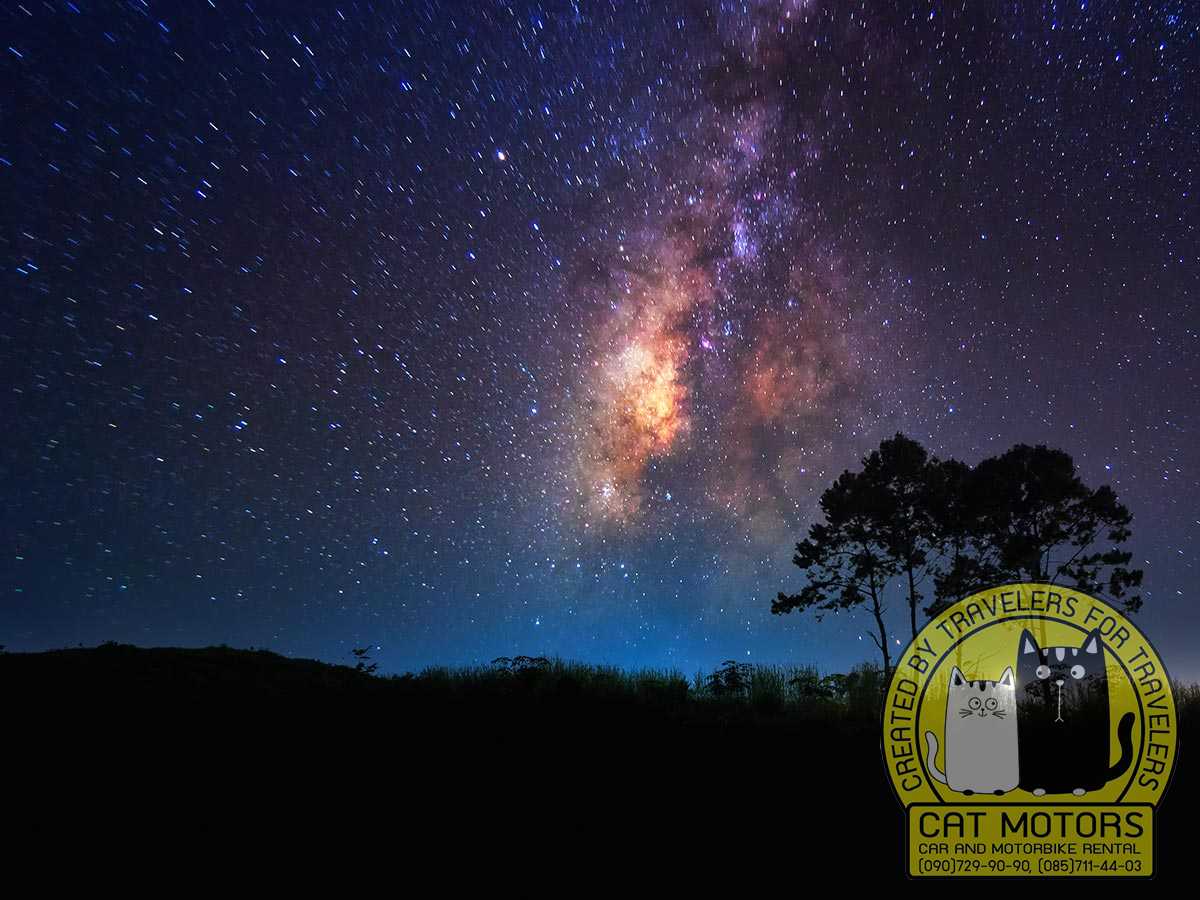
The guardians of the national park, in their grand generosity, offer the humble abode of tents and the comfort of sleeping bags to their esteemed guests. For a mere sum of 350 THB, travelers can secure for themselves a shelter beneath the whispering pines. Moreover, sustenance need not be a concern for the park is home to several improvised eateries, cooking up wholesome meals to satiate the appetite stirred by mountain air.
In these quaint establishments, one can dine and breakfast for an amount as modest as 50 to 60 THB. Thus, the park ensures that not only are your adventurous spirits catered to, but your creature comforts are not forsaken. You shall find here, amid the wilds, the familiar warmth of a meal shared and a night spent under the watchful gaze of the starlit sky.
Nan's Old Town
This charming Old Town preserves the rich history and culture of the Thai Lue people, who migrated from southern China centuries ago. Nan’s Old Town offers many attractions for tourists and locals alike, such as temples, museums, art galleries, cafes, and markets. You can also enjoy the natural beauty of the surrounding mountains and forests, which are home to several Nan national parks.
One of the highlights of Nan’s Old Town is Wat Phumin, located in the heart of the town. Wat Phumin is an iconic temple boasting some of Thailand’s most beautiful and well-preserved murals.
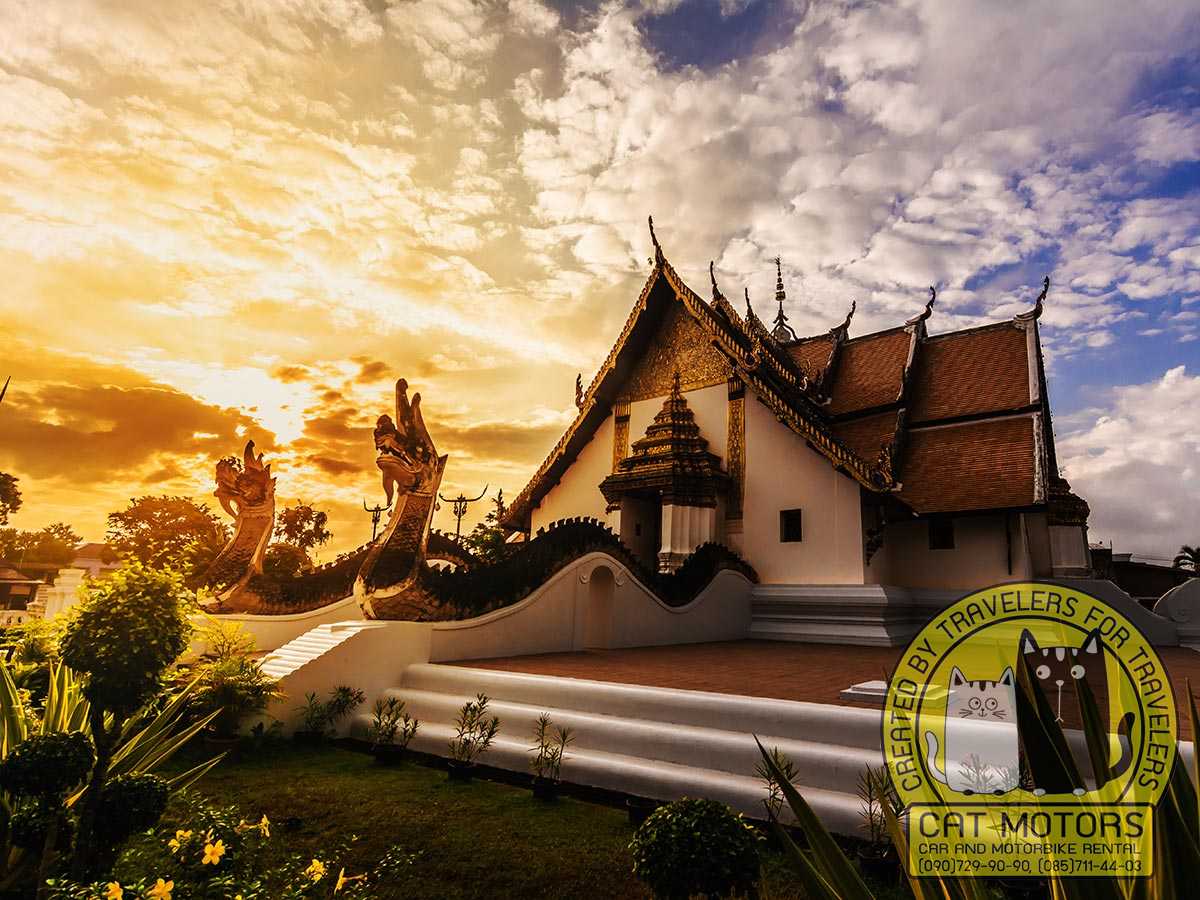
The temple’s murals depict scenes of the everyday life of the Thai Lue people in Nan, including a famous painting of a man flirting with a local woman, which is believed to be a portrait of one of the artists. The temple’s impressive architecture and cultural significance make it a must-visit attraction.
Wat Phra That Chae Haeng is another stunning temple and attraction in the heart of Nan’s old town. The temple has a golden chedi that houses a sacred relic of the Buddha. It also has a beautiful view of the Nan River and the surrounding mountains. Wat Phra That Chae Haeng is a great place to experience the spirituality and beauty of Thailand. You will be amazed by its architecture, art, and atmosphere.
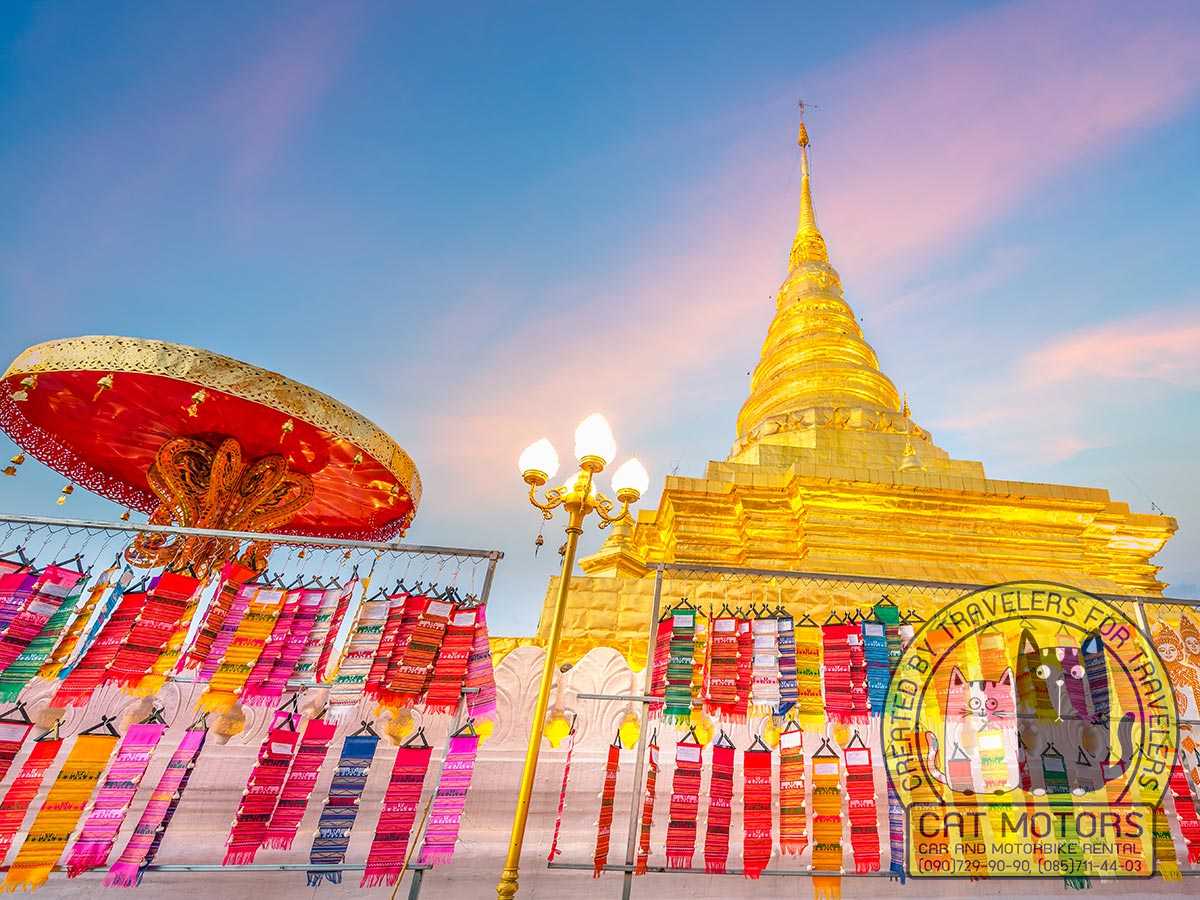
Finally, complete your day with a stroll along Kuang Mueng Nan Walking Street, a vibrant night market located in front of Wat Phumin. The market offers a variety of local and traditional food stalls, selling an array of local specialties to try, and shops selling local crafts and souvenirs. It’s a great place to submerge yourself in local culture and enjoy a spot of people-watching.
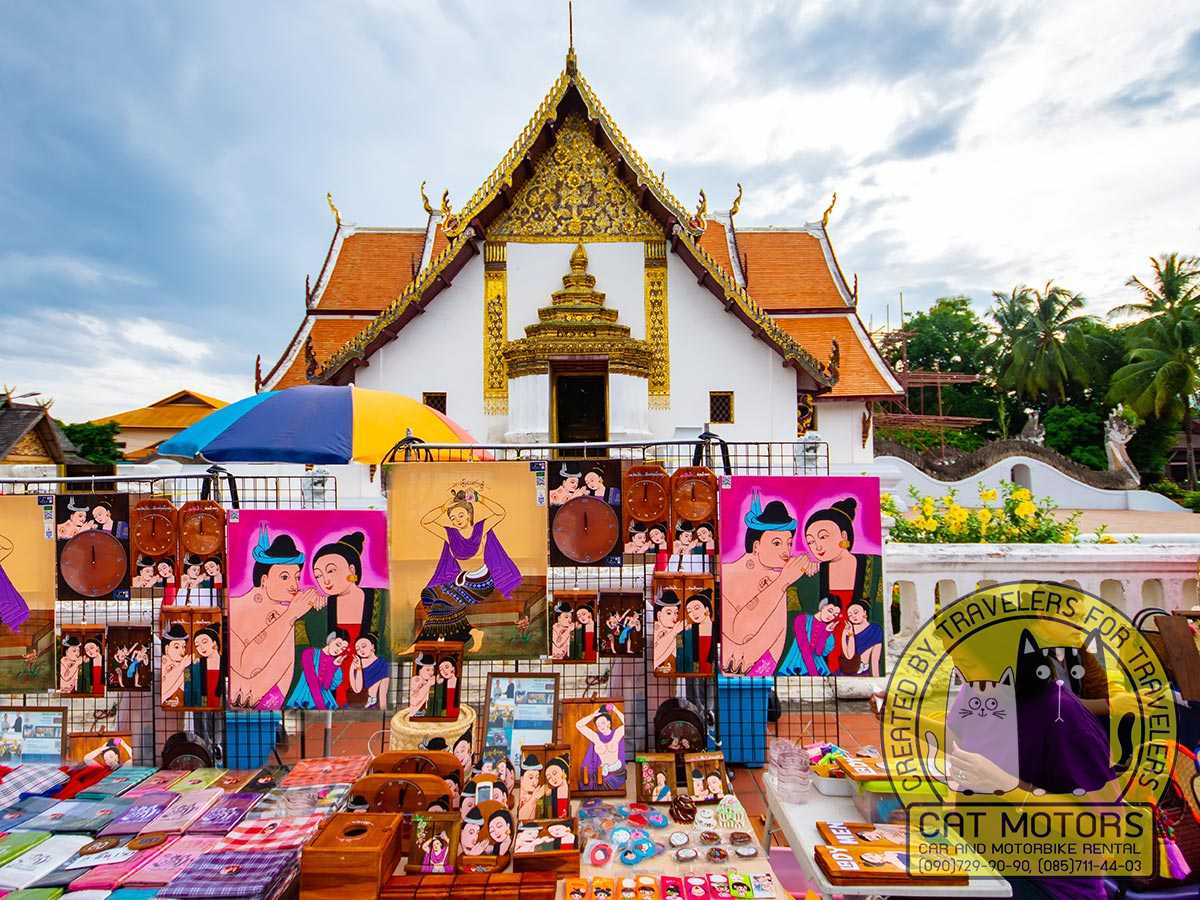
Nan Riverside Art Gallery
This gallery was founded by Khun Winai Prabripoo, a famous Nan native artist who wanted to share his passion for art with the people and youth of Nan province. Nan Riverside Art Gallery is a place where you can appreciate the beauty of art and culture in a peaceful and scenic setting.
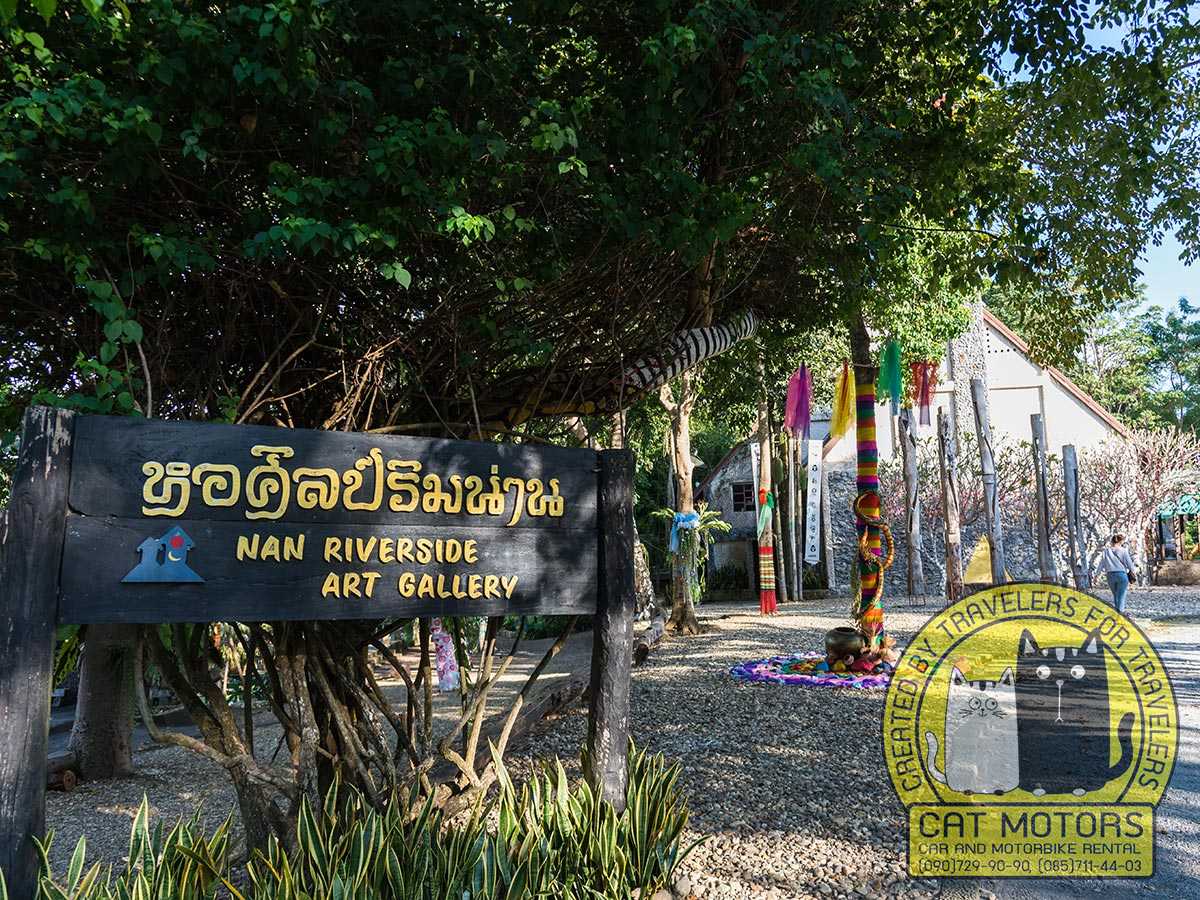
The gallery displays paintings by Her Royal Highness Princess Maha Chakri Sirindhorn and other artists, as well as mural paintings from Nan temples. You can also admire sculptures, music, and photos in the outdoor area. The gallery is located about 20 minutes drive north of Nan’s Old town, along the Nan river. It is open every day except Wednesday, from 9 am to 5 pm.
Wat Phra That Chang Kham Worawihan
Also known as the Elephant Temple, Wat Phrathat Chang Kham Worawihan is one of the oldest temples in Nan. The temple features a stunning gold pagoda built on top of 24 elephant statues, and its ordination hall showcases the Lanna-Thai Lue hybrid architectural style. The temple also houses the most extensive Buddhist scripture library in Thailand.
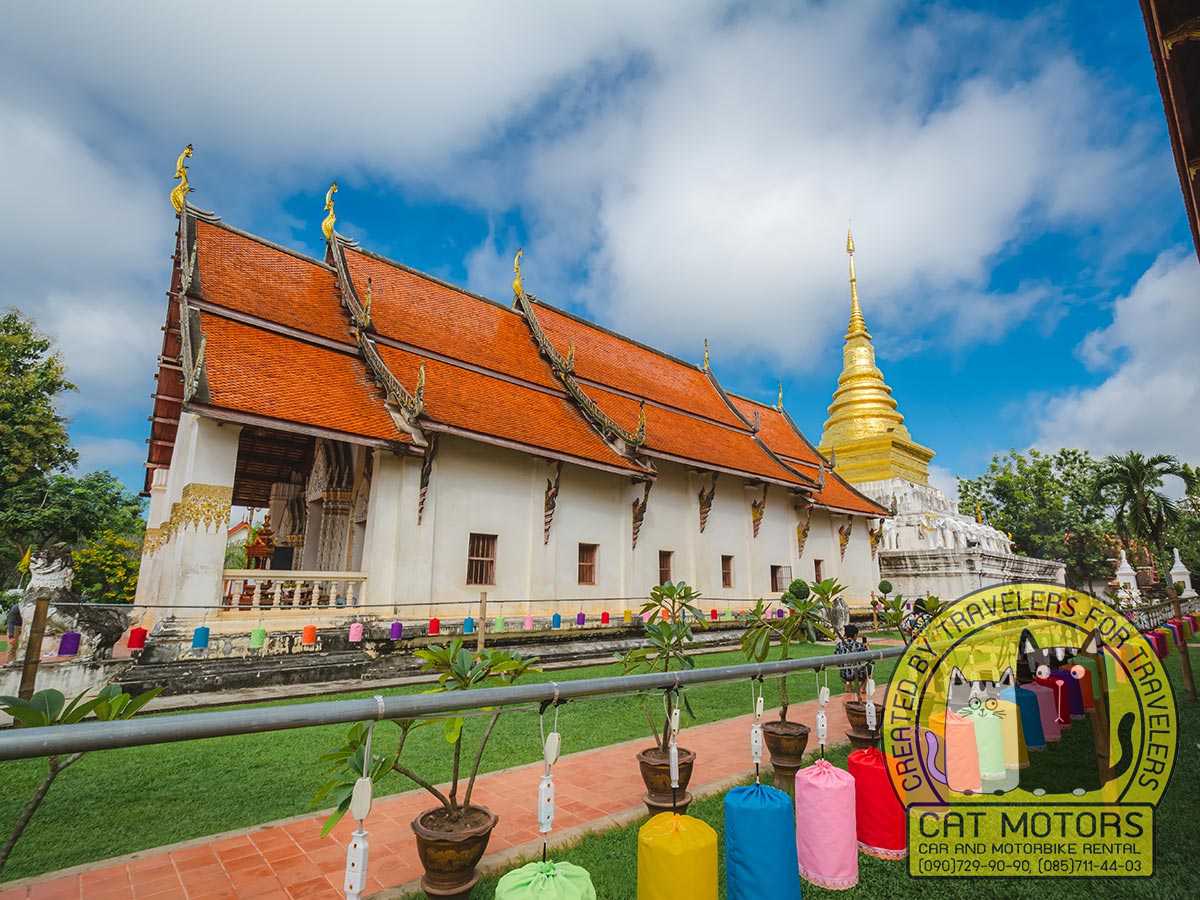
Another attraction of this temple is the standing Buddha image which is believed to be over 600 years old. The image is made of bronze and has a height of 3.65 meters (11.9 ft). It is meticulously one of the most beautiful and graceful Buddha images in Nan province.
The image is located in a narrow building next to the ordination hall, displaying ancient paintings and artifacts. Visitors can admire the serene expression and elegant posture of the Buddha, as well as the intricate details of its robe and crown.
Additionally, Wat Phra That Chae Haeng, only a 7-minute drive away, is another stunning temple you must visit in the Province. The temple has a golden chedi that houses a sacred relic of the Buddha. It also has a beautiful view of the Nan River and the surrounding mountains. Wat Phra That Chae Haeng is a great place to experience spirituality and beauty, and you’ll definitely be amazed by its architecture, art, and atmosphere.

Nan National Museum
This museum is located in the former palace of Nan’s last two feudal lords, showcasing this ancient kingdom’s rich heritage and art. You will be amazed by the exquisite collection of Buddha images, ceramics, textiles, weapons, musical instruments, and royal regalia that reflect the glory and diversity of Nan.
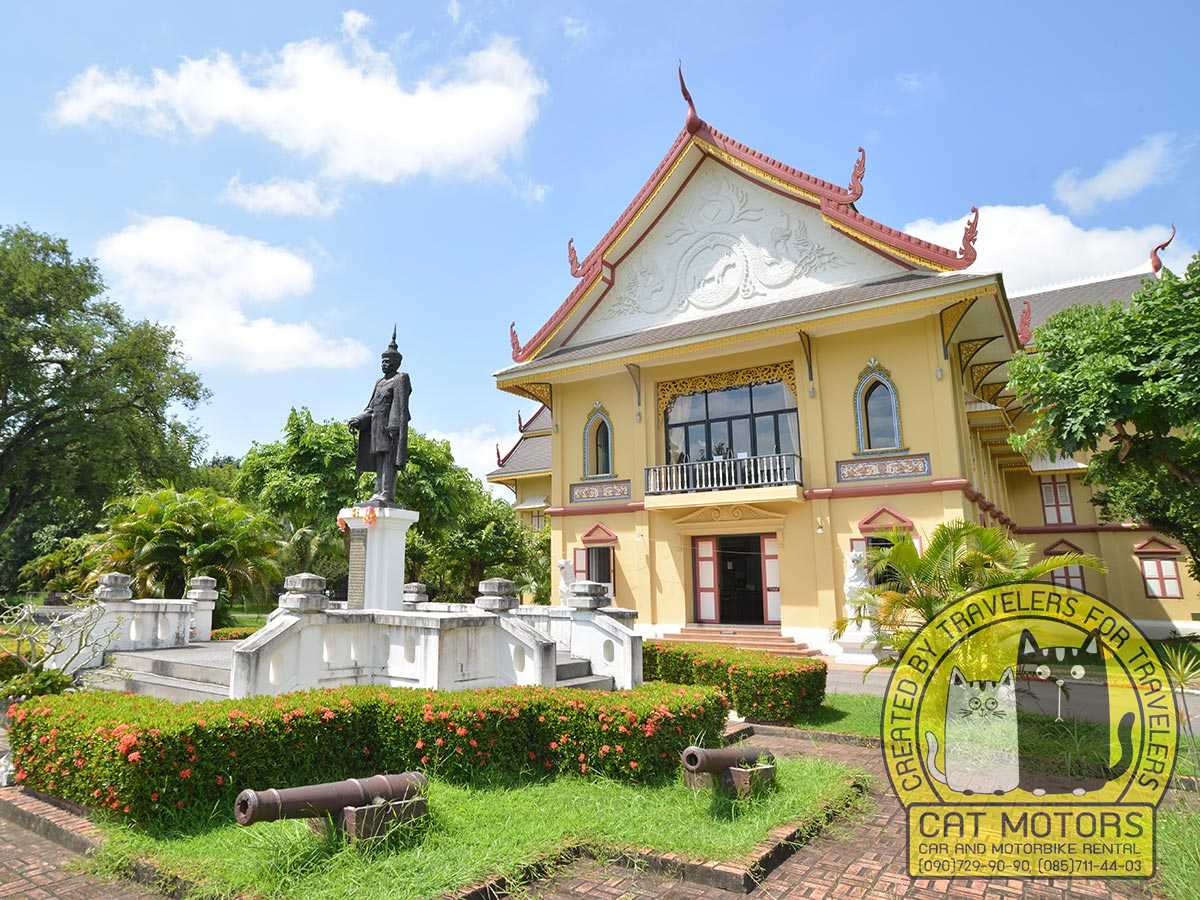
You will also learn about the fascinating history and culture of the people who lived in this region from prehistoric times to the present day. The museum is a treasure trove of information and beauty that will enrich your understanding and appreciation of Nan.
Bo Kluea District
If you have more time to explore the area, then Bo Kluea District is worth the visit. The district is known for its scenic view of Doi Phu Kha Mountain and ancient salt wells, a popular spot for adventure activities such as hiking and camping. But there is much more that this district can offer.
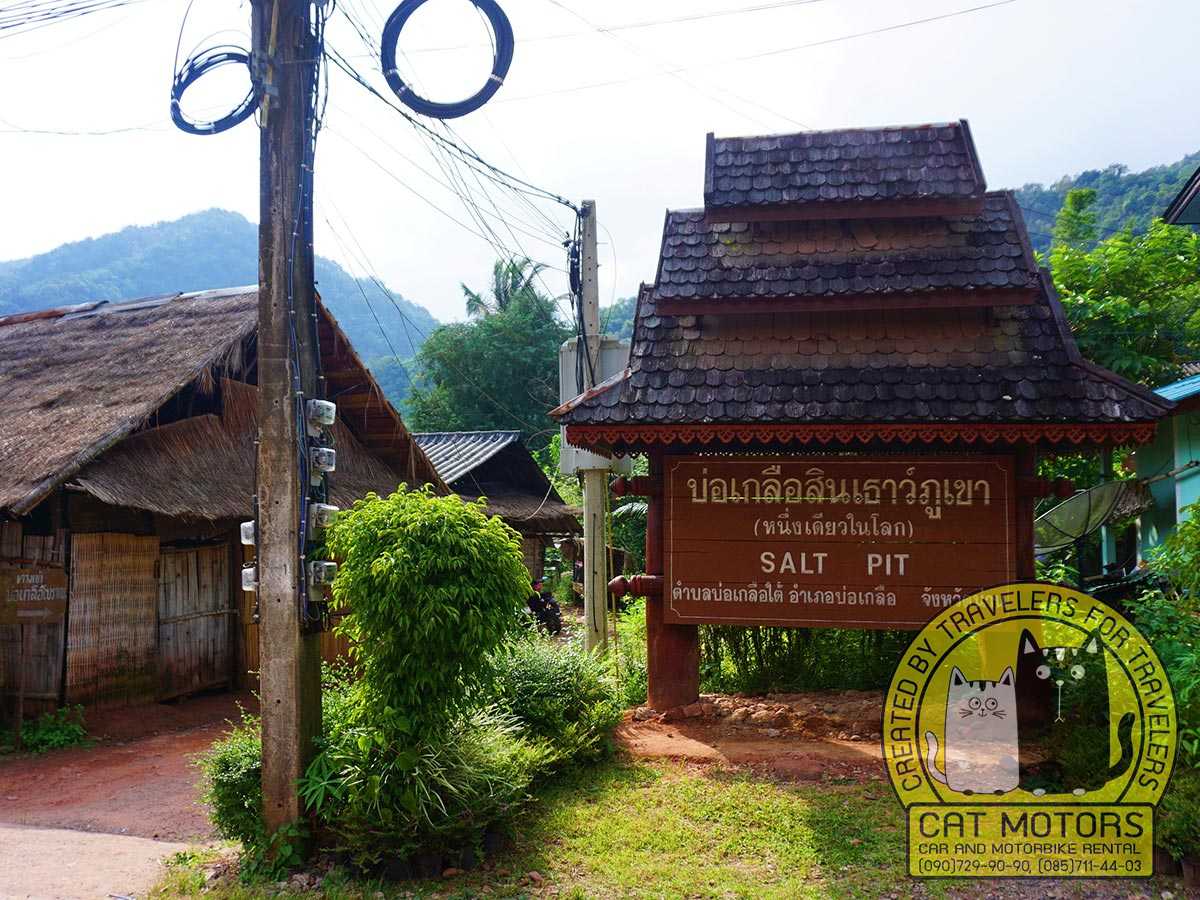
One of the highlights of Bo Kluea District is Doi Phu Kha National Park, which is the largest national park in Northern Thailand. The park is famous for its viewpoints along the main road, cool weather, campsites at higher elevations, many trails, and some impressive caves. The park is also home to rare plants and animals, such as the chomphu phu kha tree with pink flowers, the beautiful nuthatch bird, and the Laotian bearded snake.
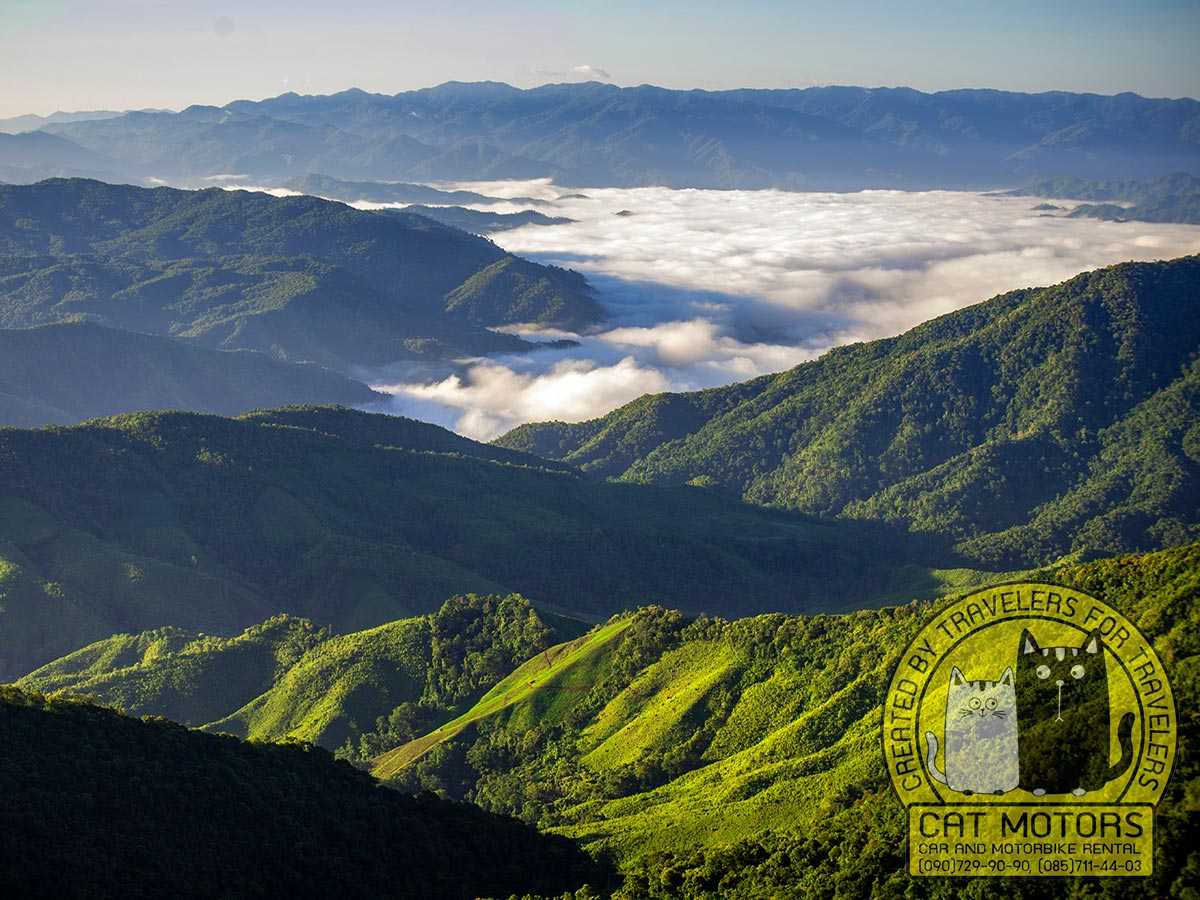
Speaking of ancient salt wells, you may want to visit the Bo Kluea Rock Salt Well, which is a geologically rare attraction that has been mined for centuries. The saltwater is hauled out of wells and then boiled in large vats to produce the salt, and you can see the traditional salt-making process and buy salt products from the local stalls, such as foot spas, face scrubs, and soaps. You can also enjoy the natural surroundings of the village and the river that flows through it.
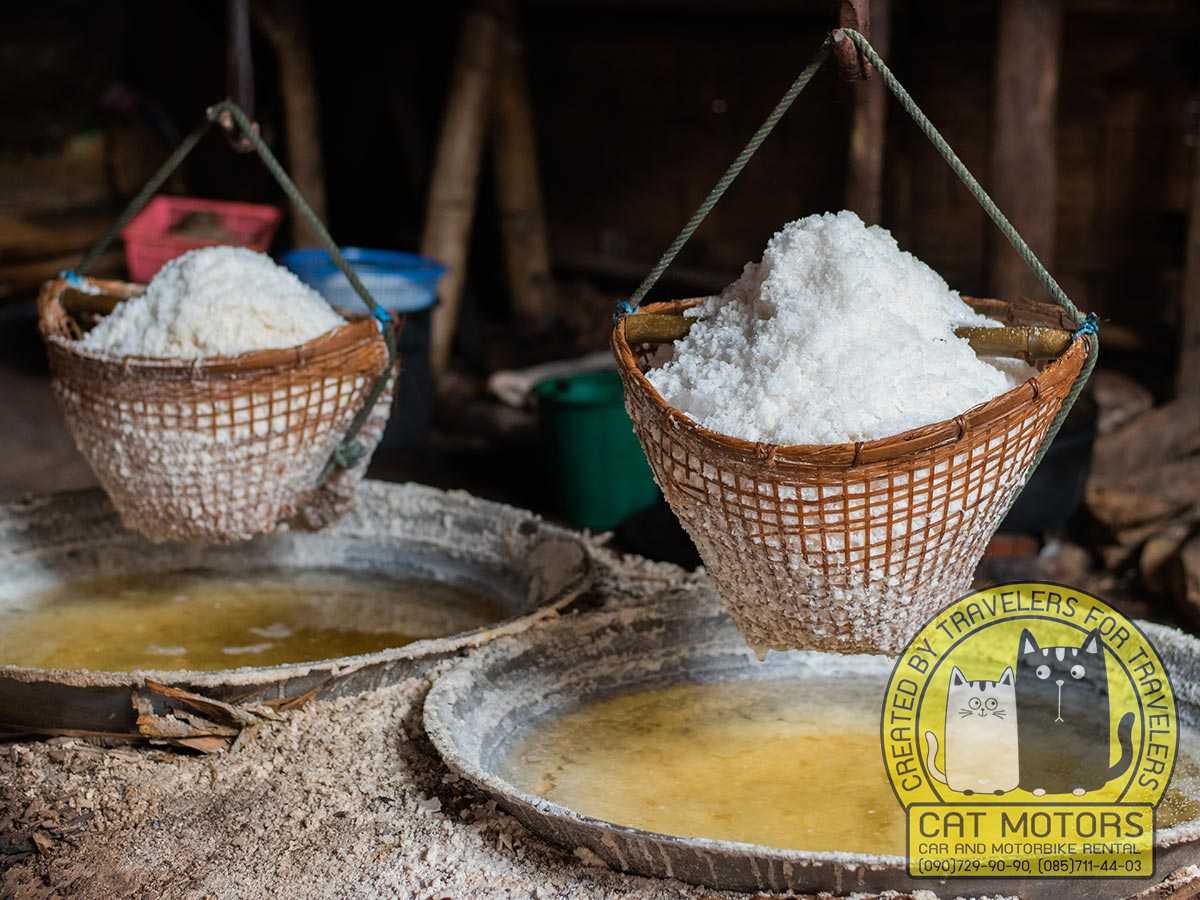
Finally, the Sapan Village and its iconic waterfall (also in the Bo Kluea District) are famous for their woven textiles made by local women using natural dyes and traditional techniques. Making a stop here is well worth the trip, where you can see the weaving process, buy some beautiful fabrics, and learn about the culture and history of the village.
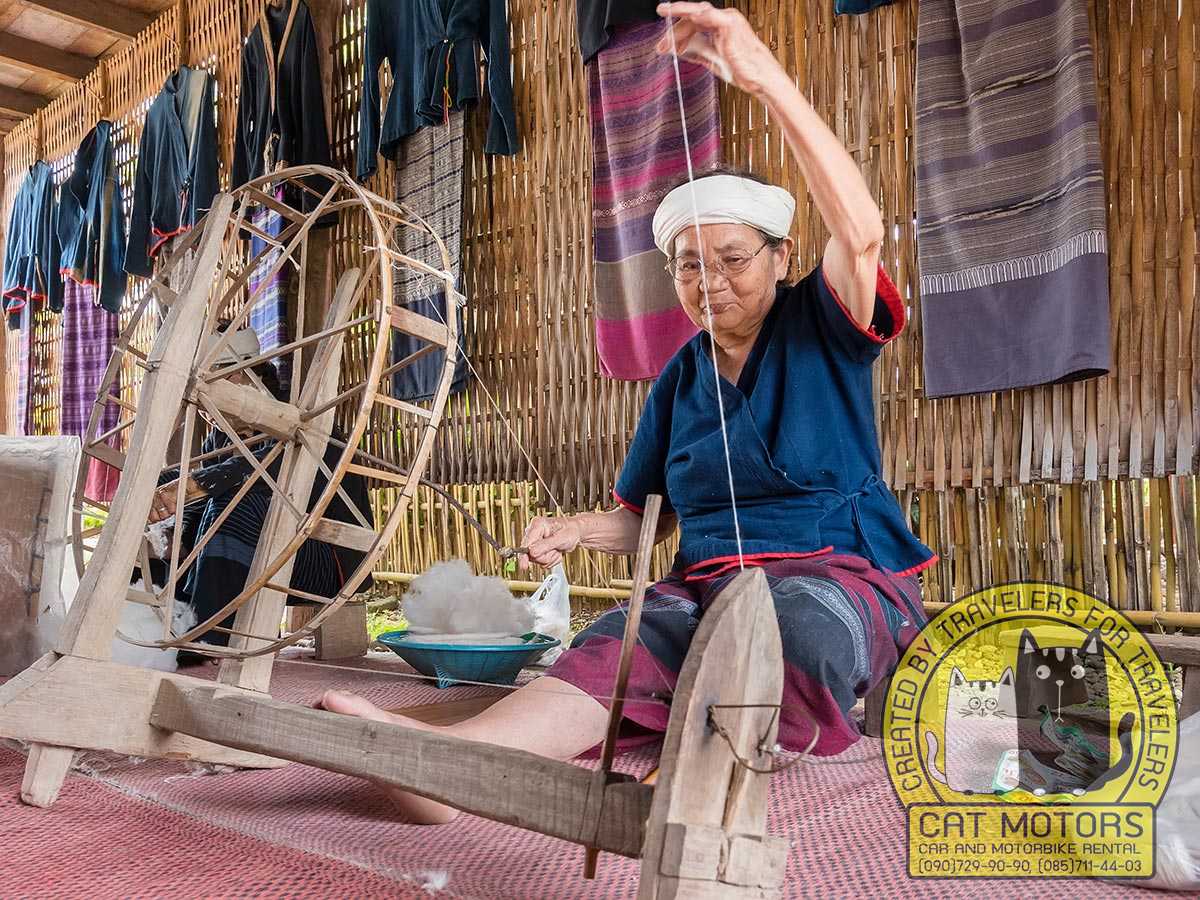
Pua District
Another nearby destination worth exploring is Pua District, famous for its orchards, coffee plantations, and handicrafts. The district offers a unique opportunity to experience the local way of life and submerge yourself in the Province’s rich culture.
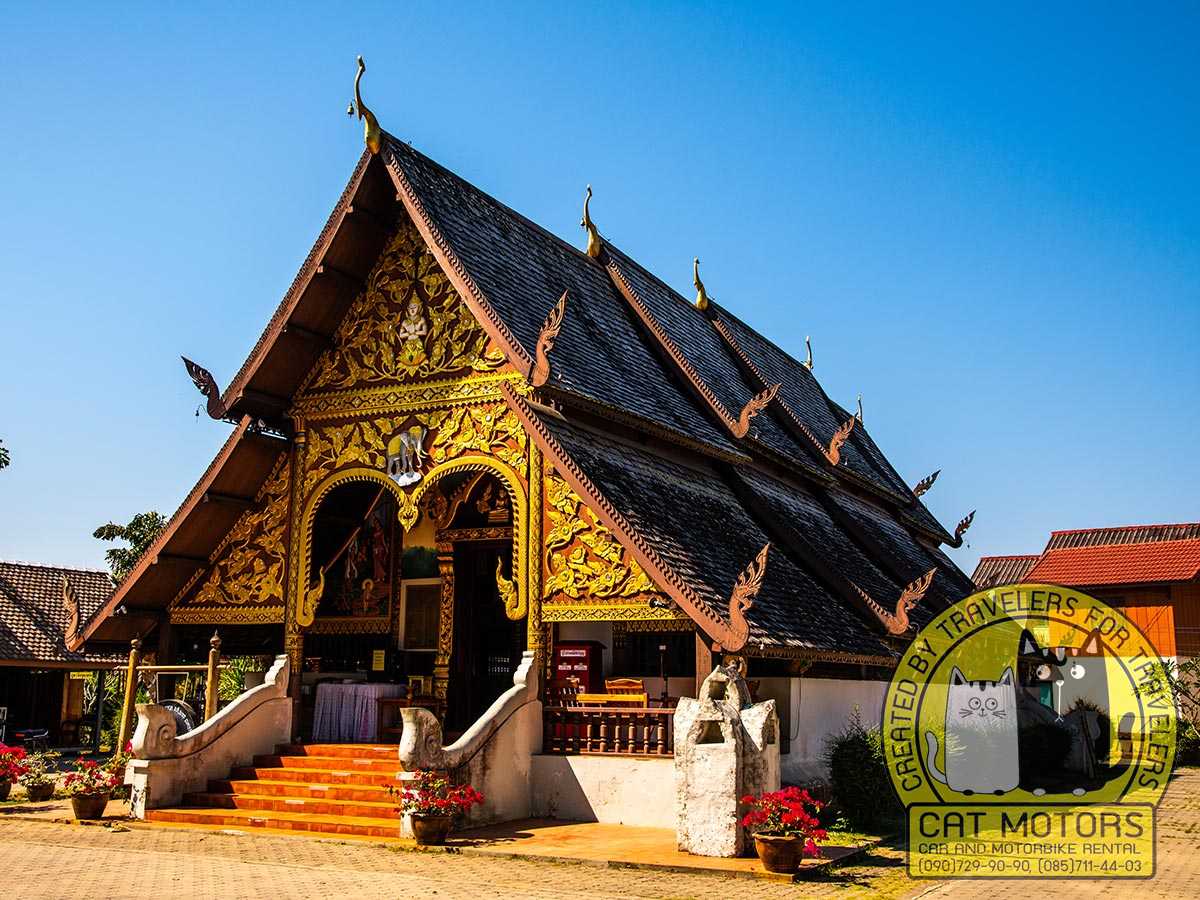
Pua District is not only a scenic destination but also a cultural one. You can admire the beautiful Lanna-style temples, such as Wat Phuket and Wat Rong Ngae, and learn about the history and backgrounds of the Tai Lue people who live in the area.
You can also enjoy local delicacies, such as Kalamae (caramelized sticky rice with coconut milk), and shop for bamboo, cotton, and silk handicrafts. Pua District is a place where you can experience the authentic charm of Nan province.
This Province’s destination offers a unique blend of history, culture, and adventure and offers top attractions that will honestly give you a blast and a taste of Thai tradition, leaving you with memoirs that will last a lifetime.
Nan's Nan-Tastic Food And Drink Scene
One of the joys of visiting Nan is diving into its delicious Northern Thai cuisine and local specialties. Food in Nan reflects the flavors of Lanna (Northern Thailand), with some Laotian influences and unique provincial twists. Independent travelers who appreciate authentic food – whether street eats or refined fare – will find plenty to savor. Here’s a guide to what to eat in Nan and where:
Northern Thai Classics
Nan’s restaurants and markets are the perfect place to try all the iconic northern dishes. Don’t miss Khao Soi, the famed coconut curry noodle soup topped with crispy noodles, shallots, and lime – several local eateries serve excellent versions. Nam Prik Ong and Nam Prik Num are two classic chili dips (one a tangy blend of minced pork and tomato, the other a smoky green chili and eggplant mix) typically served with baskets of sticky rice, pork cracklings, and veggies – a northern staple you should sample. Sai Ua (northern herbal sausage) and Laab Muang (northern-style minced pork salad with spices and herbs, distinct from the northeastern laab) are also frequently found. In Nan, as in much of the north, meals are often enjoyed at a khantoke (low round table) while sitting on the floor – a fun experience if you go to a traditional restaurant or attend a cultural dinner event.
Nan Specialties
While Nan doesn’t have a long list of hyper-unique dishes, there are a few regional favorites to seek out. One is “Hor Mok Pla Nan”, a local variant of the steamed curried fish custard served in banana leaves – often made with river fish from the Nan River and local herbs. Another is Kaeng Hoh – a mixed curry stew that originated as a way to use up leftovers, now a delectable dish mixing glass noodles, curry paste, meats, and veggies; it’s common in Nan’s home cooking. Pad Makauw Yao (stir-fried local long eggplant with pork and basil) is a delicious vegetarian-friendly dish often found here. If you visit in cooler months, keep an eye out for seasonal mushrooms from the surrounding forests; Nan folks love incorporating earthy wild mushrooms into soups and stir-fries. And be sure to try Thai Lü cuisine if you can – for example, Khao Kan Jin (steamed rice mixed with pork blood in a banana leaf, sounds adventurous but is very tasty) is a Tai Lü dish you might find at the morning market.
Sweet Treats and Coffee
Northern Thailand is known for its sweet tooth, and Nan is no exception. A popular local dessert/snack is Khao Lam, sticky rice mixed with coconut milk and beans, roasted in bamboo tubes – you’ll see these bamboo tubes sold in markets; peel one open for a sweet, sticky reward. Kanom Dok Sanow is a rare Nan specialty – a flower-shaped cookie made from the sugar of Palmyra palm (if you find these, they make great gifts!). For a refreshing treat, try Nam Mapraw Orn, a chilled sweet young coconut pudding sold by street vendors. As for drinks, Nan has quietly been developing a reputation in Thailand’s coffee scene. The province grows high-altitude coffee beans, and a number of hip cafés have sprung up in town. Seek out a cup of locally grown arabica at cafes like Café Sood Gong Dee (known for its latte art and relaxed vibe) or Erabica Coffee (which often stocks Nan coffee). These air-conditioned cafés also provide a nice break in the afternoon heat, with homemade cakes often on offer.
Best Restaurants in Nan
Despite its small size, Nan city has a growing selection of eateries catering to discerning travelers. For authentic northern Thai food in a charming setting, Huen Chao Nang is a top choice (the name means “Palace of the Princess” and it’s set in a wooden house); here you can sample staples like gaeng hung lay (Northern pork curry) and fresh bamboo shoot salad. Another favorite is Huan Puka (often spelled Huan Phu Kha), which serves local Nan dishes and hill tribe-inspired recipes – think grilled meats, spicy dips, and herbal soups – in a garden setting. If you’re craving something different, Crossroads Nan is a popular restaurant-bar that offers Thai and Western fusion dishes and often has live music in the evenings. For lunch, Nan Kitchen (near the museum) is known for its khao soi and friendly service. Also seek out Nan Night Food Market (more on that below in Shopping) for an array of local food stalls. As for upscale dining, Nan is more about casual local eateries, but some boutique resorts (like Nan Seasons Boutique or certain riverfront hotels) have reservation-only dinners with set menus showcasing seasonal local ingredients in creative ways. Finally, don’t forget desserts: Khanom Wan Pa Nim is a famous dessert shop in Nan – a great place to try old-style treats like tubs of lod chong (pandan noodles in sweet coconut milk) or grass jelly with syrup.
Cafés and Nightlife
By day, exploring Nan’s café scene is delightful – besides the ones mentioned, Gin Restaurant has a lovely ambiance and also serves meals (despite its name, it’s more than just a bar). Rim Nan and Ban Rim Nam are riverside spots where you can sip local coffee with a view of the Nan River. At night, Nan is generally low-key, but there are a handful of bars and live music venues where you can enjoy a drink. The Nan Steakhouse & Bar is one such spot, and Yellow Bus is a quirky bar popular with the younger Thai crowd. Most travelers, however, end up enjoying the night market or relaxing at their boutique hotel with a beer or wine. Speaking of which, Nan province even has a burgeoning craft beer scene – you might find a locally brewed beer at some establishments (due to Thai laws, they might be somewhat under-the-radar).
Eating in Nan is an adventure for the taste buds. You’ll find that food here is still very much made for locals – which means authentic flavors, perhaps a bit milder in spice than the searing chilies of Isaan, but richly aromatic with herbs like lemongrass, galangal, and dill (a northern herb called pak see). Sticky rice is the staple starch, so expect it with most meals instead of jasmine rice. And the best part: whether you’re dining at a simple street stall or a nice restaurant, prices are very reasonable compared to big cities, so you can feast to your heart’s content. Don’t hesitate to try the street food – a bowl of steaming kanom jeen nam ngiao (rice noodles with spicy pork-tomato broth) from a market stall for breakfast might end up being one of your fondest memories of Nan. Food is central to Nan’s hospitality; by exploring the local cuisine, you’re not just filling your stomach, you’re joining in a key aspect of local life.
Where to Stay in Nan: Boutique Hotels and Guesthouses
Nan’s accommodations tend towards the charming and unique, perfectly suited for independent travelers who value comfort and authenticity. While the city is not large, there are several high-quality boutique hotels and guesthouses that offer a memorable stay with a sense of place. Here are some top recommendations for where to stay in Nan:
- Pukha Nanfa Hotel: Housed in a meticulously restored teakwood mansion in the heart of town, Pukha Nanfa is often cited as Nan’s most atmospheric boutique hotel. With just a handful of rooms decorated in classic Lanna style (think wooden four-poster beds, local textiles, and antique furnishings), it exudes heritage charm. The hotel doubles as a living gallery, displaying local artworks and historic photographs on its walls. Service is personal and warm – expect refreshing herbal drinks on arrival and staff eager to share tips about their hometown. Guests love the included breakfast, which features homemade northern dishes. This hotel’s style and comfort have earned it rave reviews: one traveler described it as a “very stylish hotel with lots of local art” and praised its comfortable rooms and fantastic service. Staying here truly feels like stepping back in time to the Nan of a century ago, without sacrificing modern amenities like air conditioning and Wi-Fi.
- Nan Seasons Boutique Resort: If you prefer a tranquil retreat just outside the city, Nan Seasons is an excellent choice. Located a short drive from downtown amidst rice fields and gardens, this boutique resort offers private bungalows that blend contemporary design with Thai craftsmanship. Each bungalow is spacious, with open-air showers and verandas that overlook lush natural scenery. Guests can enjoy a beautiful saltwater pool, an on-site restaurant serving farm-to-table local cuisine, and even a small spa for Thai massages. The resort is run by a friendly Thai-Dutch couple who pay great attention to detail – from guiding guests on local excursions to ensuring the gourmet breakfasts are top-notch. It’s an ideal base if you have a car or don’t mind using the resort’s shuttle, as the peace and star-filled nights you get in return are magical. For many, a stay here is a highlight of their Nan trip, offering resort-level luxury with a personal touch (and a surprisingly moderate price).
- NanNakara Boutique Hotel: Located conveniently near Wat Phumin and the Walking Street, NanNakara is a newer boutique hotel that has quickly gained popularity. It combines a central location with boutique elegance – the design is a mix of colonial and Lanna influences, featuring white facades, wooden lattices, and vintage tilework. Rooms are decorated in soothing tones, equipped with comfortable beds and modern bathrooms. Despite being in the center, the hotel is tucked on a quiet lane, ensuring a peaceful night’s sleep. Guests love the easy access to major attractions (you can literally walk to Wat Phumin in 2 minutes) and the friendly staff who often help arrange day tours. One review called it “a splendid boutique hotel in the city centre giving easy access to local attractions, with contemporary design and spacious rooms”. Breakfast is served in a lovely courtyard and often includes local treats alongside standard fare. NanNakara offers great value for money and is perfect for those who want convenience without staying in a generic place.
- Apirata Resort or NirvaNa Resort: For travelers with their own transport looking for a nature-centric stay, some small resorts on the outskirts provide a resort-like feel. For instance, Apirata Resort sits by a lake and garden, and NirvaNa Resort (not a typo – it’s a play on Nan) offers modern villas with mountain views. These are peaceful escapes where you can enjoy bird songs in the morning and perhaps borrow a bicycle to ride around nearby villages. While a bit farther (10-15 minutes drive to town), they cater well to families or couples seeking privacy.
- Guesthouses and Homestays: Nan also has several well-regarded guesthouses that offer personal hospitality and insight into local life. Sukkasem Hotel, set in a charming old wooden building, is budget-friendly yet full of character (creaky floors and all). Huen Kum Nan is a homestay-style small hotel with traditional decor where the owners cook delicious breakfast and often chat with guests about Nan’s culture. If you desire an even more local experience, some homestays in nearby villages (like in Pua or around the national parks) can be arranged, but in Nan city itself, boutique hotels are the main draw for independent travelers rather than backpacker hostels.
Wherever you stay, you’ll find Nan’s accommodations generally clean, safe, and staffed by genuinely kind people proud of their town. The mid-range price point in Nan often gets you more than it would in larger destinations – many places include breakfast, free bikes to borrow, and helpful concierge-like service to plan your itinerary. During weekends or Thai holidays, Nan can be busy with domestic tourists, so it’s wise to book ahead for popular boutique spots (they have limited rooms). On weekdays, you might snag good deals or walk-in availability. The good news is Nan’s lodging scene is growing alongside its popularity, but it remains overwhelmingly composed of independent, locally owned establishments – no big chain hotels here yet – which means your tourism spending directly supports the community. After a day of exploring temples and mountains, coming back to a cozy boutique hotel or a teak guesthouse veranda in Nan is the perfect way to unwind, perhaps with the distant sound of temple bells as the sun sets.
Getting to Nan and Transportation
Part of Nan’s appeal is its relative remoteness, but thanks to improved connections, reaching Nan city has become much easier in recent years. Here are the best ways to reach Nan and how to get around once you’re there:
- By Air: Flying is the quickest way to get to Nan. Nan Nakhon Airport (NNT) is located just a few kilometers from the city center and has multiple daily flights from Bangkok. Both Nok Air and Thai AirAsia operate direct flights from Bangkok’s Don Mueang Airport to Nan, a flight time of about 1 hour 20 minutes. In fact, there are around 5 daily flights on this route, with morning and late-afternoon options, making it convenient to plan your trip. Fares can be quite affordable (sometimes as low as $30 one-way if booked in advance). From Chiang Mai or other cities, there are currently no direct flights – you would connect in Bangkok. Upon arrival in Nan, the airport is so close that a 10-minute taxi or hotel transfer will have you in town; some hotels offer free airport shuttles for guests. The airport is small and friendly, giving a charming first impression of Nan.
- By Bus: Nan is well-served by long-distance buses, which are a comfortable and economical option. From Bangkok, VIP and overnight buses depart from Mo Chit Northern Bus Terminal, usually in the evening, and arrive in Nan early the next morning (journey time ~9 hours, distance ~668 km). These buses typically have reclining seats or sleeping berths. Companies like Budsarakham and Transport Co. run the route. From Chiang Mai, the Green Bus company operates a daily service to Nan (distance ~300 km). The ride takes around 6-7 hours winding through mountain roads. The scenery en route is quite beautiful, especially if you take a daytime bus – you’ll pass through national forests and rural towns. Buses from Chiang Rai usually require a change in Phayao or Phrae, but it’s doable. From nearby provinces like Phrae, Uttaradit, or Phayao, minivans and local buses run regularly (2-4 hours travel). All intercity buses arrive at the Nan Bus Terminal, which is about 2 km south of the town center. Tuk-tuks or songthaews (local pickup truck taxis) at the station can take you to your accommodation for a small fee (typically 50-100 THB, agree on the price first). If arriving by overnight bus from Bangkok, you may reach very early (like 5 AM); in such cases, it’s easy to find a coffee at 24-hr convenience stores near the terminal or wait until your hotel’s check-in time.
- By Car: For those who love road trips, driving to Nan is highly rewarding. The roads are well-paved and the journey allows you to explore along the way. From Bangkok, it’s roughly an 8-hour drive. A popular route is to go via Phitsanulok and Phrae, both of which have their own attractions (Sukhothai Historical Park is a slight detour but feasible en route). From Chiang Mai, driving takes about 5-6 hours; you can go via Phayao (with a stop at the scenic Phayao Lake) or via Lampang and Phrae. Having your own car also sets you up to drive the Nan Loop – a famed circular route through Nan’s mountains and national parks (though that’s another topic in itself, covered in a separate Nan Loop guide). Car rental is available in Chiang Mai or Phitsanulok if you want to rent one for the trip to Nan. Once in Nan, a car is useful to reach outlying sights like Wat Chae Haeng, but inside the town parking is plentiful and traffic is light. Do be prepared for winding mountain roads, especially if you venture beyond Nan city to places like Bo Kluea or Pua (again, part of the greater Nan Loop).
- By Train: There is no direct train to Nan, as the railway does not extend to this part of the country. The nearest you can get by train is Den Chai station in Phrae Province (on the Bangkok-Chiang Mai line). From Den Chai, Nan city is about 140 km away, which you’d cover by bus or car. Some travelers take an overnight train to Den Chai (or Uttaradit’s Sila-at Station), then continue by bus to Nan – this can be an interesting, slower journey if you enjoy train travel, but overall travel time will be much longer than the direct bus.
- Within Nan City: Getting around Nan is easy and enjoyable. The city center is compact, so walking or cycling are ideal for sightseeing. Many boutique hotels and guesthouses have free bicycles for guests, and cycling from temple to temple under the shade of tree-lined streets is highly recommended. Traffic is minimal, making it safe for riders; just remember to stay hydrated and wear sunscreen or a hat, as the sun can be intense midday. For longer distances or at night, songthaews act as shared taxis – they don’t run on fixed routes regularly like big-city buses, but you can hire one like a taxi. There are also a few tuk-tuks around the market and bus station; they can be hailed for short hops (negotiate the fare). As of now, Nan doesn’t have Grab or Uber services pervasive, but this may change – your hotel can always call a reliable driver for you if needed. If you want to explore the surroundings independently, consider renting a scooter or motorbike – several shops in town rent motorbikes for around 300 THB per day. This gives you freedom to visit nearby waterfalls, viewpoints, or drive part of the scenic routes. Always wear a helmet and drive carefully, especially on rural roads where animals or sharp bends can surprise you. For visiting attractions like the Nan Riverside Art Gallery or venturing to villages, hiring a car with a driver for a day can be a good option (your hotel or a local travel agency can arrange this; prices are reasonable and the drivers often double as local guides).
In summary, while Nan might have once been considered “difficult to reach,” today it’s quite accessible whether by plane for speed or by road for scenery. The journey to get there is part of the adventure, rewarding you with views of northern Thailand’s mountains and countryside. Once you arrive, you’ll find that Nan’s leisurely pace extends to its transportation – there’s rarely a rush. Take a slow trishaw ride around town if you see one, or simply wander at your own pace. With logistics taken care of, you’re free to fully enjoy Nan’s hospitality and exploration.
Practical Tips for Visiting Nan
Before you set off to explore Nan city Thailand, keep in mind a few practical considerations to ensure your trip goes smoothly and is culturally respectful
Best Time to Visit
Nan has a tropical savanna climate with three main seasons. The cool season (November to February) is generally the best time to visit. During these months, the weather is dry and comfortably warm during the day, with average highs in the mid to upper 20s °C, and cooler nights (sometimes dipping to 15°C in December-January) – perfect for sightseeing and even a light jacket in the evening. This season also coincides with vibrant events like the Loi Krathong festival (usually November) and peak rice harvest time, making the countryside especially picturesque.
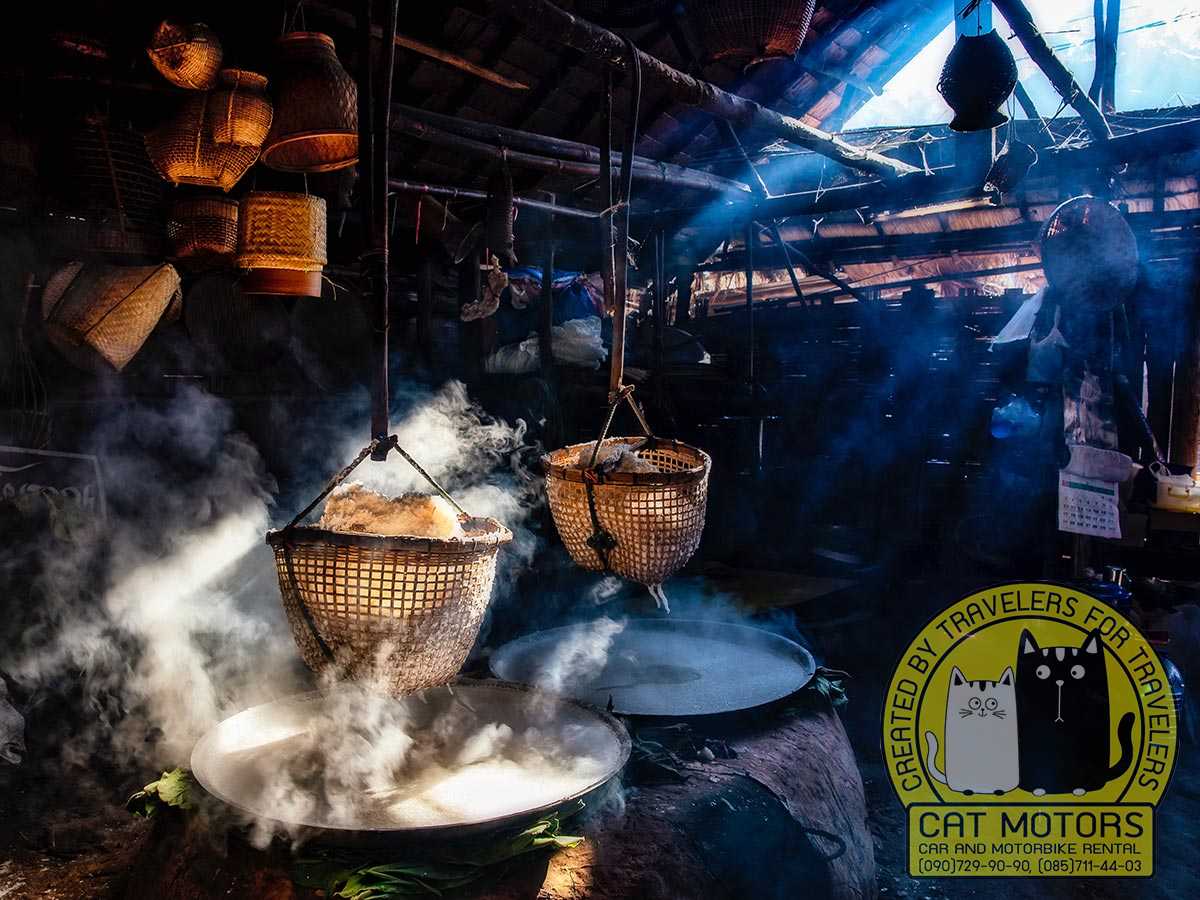
Hot season (March to April) sees temperatures rise sharply; April in particular can be very hot, with average daily maximums around 37°C (99°F). Moreover, late February through April is often the “burning season” in northern Thailand when farmers burn fields – this can lead to hazy skies and poorer air quality in the region. If you travel during this period, expect midday heat and possibly some smoke in the air; plan to do outdoor activities in early morning or late afternoon and take rests during the hottest part of day. Rainy season (May to October) brings lush green landscapes but also frequent rain. The monsoon typically arrives by late May and lasts through early October, with heavy downpours especially in August-September. Nan, being in a river valley, can experience occasional flooding in low-lying areas (usually not severe in town, but rural roads might get muddy). Traveling in the rainy season means fewer tourists and refreshed scenery; just carry an umbrella or rain jacket and be flexible with your plans. One plus is witnessing the Boat Races in late rainy season (Oct) if you’re around then. Overall, November to February is ideal, but with the right preparation any time can be rewarding – just pack accordingly.
Clothing and Attire
Nan is a traditional town with strong Buddhist values, so respectful attire is important, especially at temples. Dress modestly when visiting Nan city attractions like wats and the museum: shoulders and knees should be covered for both men and women. Lightweight long sleeves or a shawl and long pants or skirts are recommended for temple hopping (it also helps against sun and insects). Remove your shoes when entering temple buildings – many have racks outside for this purpose. Given Nan’s climate, breathable cotton clothing is most comfortable. If you visit in the cool season, bring a light sweater or shawl for the evenings. If you’re renting a motorbike, a windbreaker might be handy for early mornings. When going to rural areas or engaging in community-based tourism, dressing modestly will earn you extra respect.
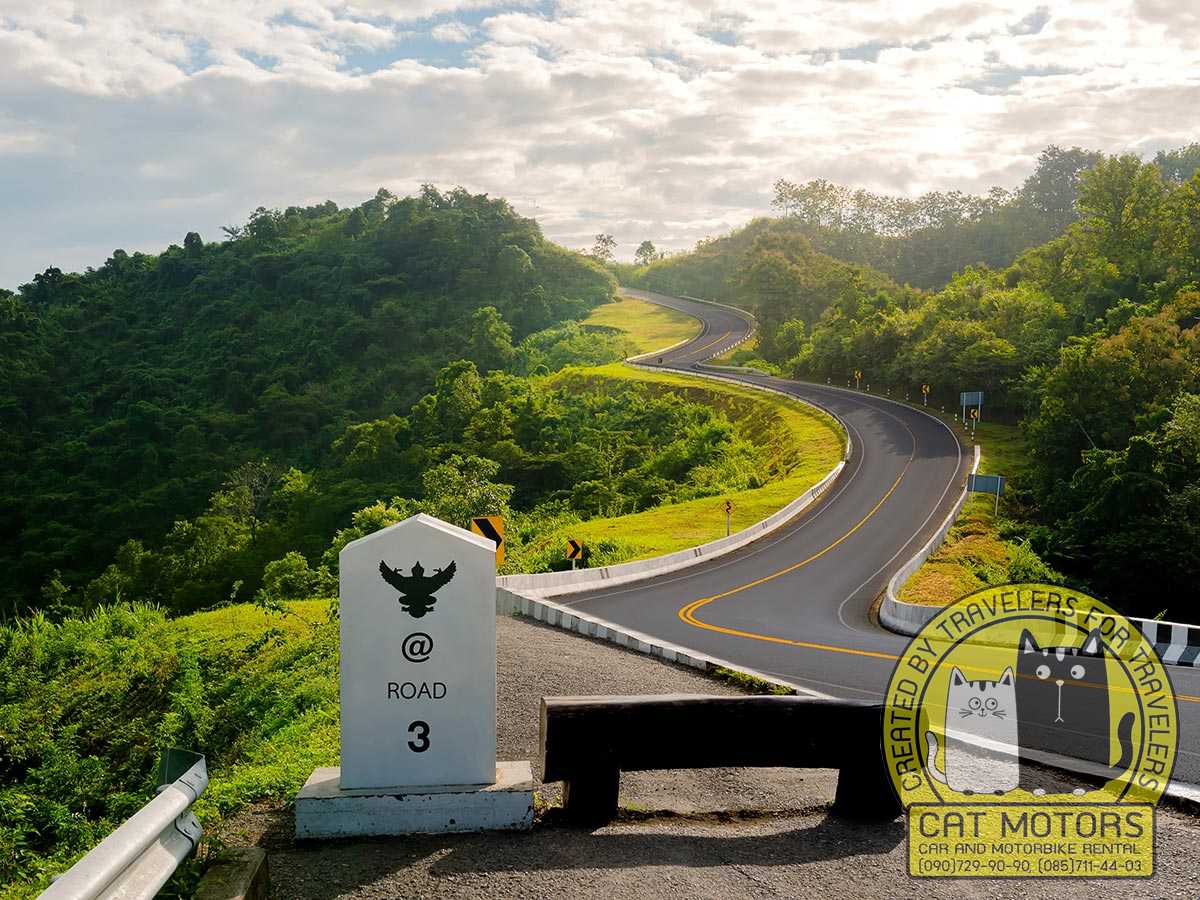
On the flip side, within your resort or at modern cafes, casual wear is fine – Nan isn’t overly strict, it’s just polite to adapt to the setting. Also, bring swimwear if your hotel has a pool, but note there are no public swimming spots in the city (though some waterfalls in national parks allow swimming). Comfortable walking shoes or sandals are a must for exploring the town’s quiet lanes and uneven temple steps. A hat and sunglasses are useful under the tropical sun, and don’t forget mosquito repellent, particularly in the evenings or if you go near the river.
Health and Safety
Nan is generally very safe. Crime rates are low in this small city and locals often look out for visitors. Petty theft is rare, but of course use common sense – keep an eye on your belongings at markets and don’t flash large amounts of cash. Traffic is light compared to big cities, yet still exercise caution when crossing streets or cycling (helmets are advisable on bikes, though not commonly worn by locals). Healthcare facilities in Nan are decent; there is a provincial hospital which can handle most issues, and a few private clinics and pharmacies in town for minor ailments. It’s a good idea to have travel insurance that covers you in case of any medical needs. Mosquito-borne illnesses are not a big problem in the city, but dengue fever exists in Thailand – just use repellent, especially in rainy season, and stay in accommodations with window screens or nets. The tap water in Nan is not potable, so drink bottled or filtered water, which is readily available (many hotels provide free bottled water daily). The food in Nan – whether street or restaurant – is generally fresh and clean; follow the usual guideline of eating where it’s busy (high turnover means ingredients haven’t sat around). In the cool season, the air is fresh and clear, but in smoky season (Feb-Mar) if you have respiratory sensitivities, consider carrying a mask. As for COVID-19 measures (if relevant during your visit), check the latest local guidelines, but being a less crowded destination, Nan has been relatively safe and serene.
Cultural Etiquette
The people of Nan are known for being warm, a bit shy but very welcoming. A few polite customs will help you connect. When greeting or thanking, a wai (placing palms together with a slight bow) is appreciated. Learn a couple of Thai phrases like “Sawasdee” (hello) and “Khop khun khap/ka” (thank you for male/female speaker) – locals will be delighted at your effort. As with anywhere in Thailand, be respectful of the monarchy (you’ll see the King’s portrait around; avoid any disrespectful comments or actions). In temples, always remove shoes and keep your head lower than Buddha statues or monks – for example, don’t stand right next to a seated Buddha for a photo, and when sitting, tuck your feet to the side rather than pointing them at any sacred objects or people. Women should not touch monks (if a monk gives something to a woman, it will be via a male intermediary or placing it down for her to pick up). Photography is generally allowed at temples and in the museum, but avoid flash on old murals as it could damage them. If you wish to take photos of locals (especially monks or hill tribe villagers), ask politely first – most will agree, some might even pose you into the shot, but it’s courteous to ask. During interactions, you’ll find Nan folks soft-spoken and polite; keeping a calm, gentle demeanor will get better results than being loud or aggressive. Patience is key – things move a bit slower here, which is part of the charm. Lastly, show genuine interest – ask about that dish you’re eating or the story of a shrine you see; many residents are happy to share about their culture (sometimes a younger person who speaks English might jump in to translate). You’ll likely hear the phrase “Nan slow life” to describe the vibe – embrace it!
Money and Connectivity
The local currency is Thai Baht (THB). In Nan, cash is king for small businesses, markets, and local eateries. ATMs are easy to find around the city center (especially near banks and 7-Eleven stores); they accept international cards (for a fee). Credit cards are accepted at higher-end hotels and some restaurants/cafes, but you’ll want cash for most day-to-day transactions. Nan has banks like Bangkok Bank, SCB, etc., in case you need currency exchange or other services. As for connectivity, Thailand has good mobile network coverage – getting a local SIM card (from AIS, Dtac, or TrueMove) at the airport or 7-Eleven is inexpensive and will give you data and call access, useful for maps or translation on the go. Wi-Fi is available at most hotels and many cafes; the city even has some free public Wi-Fi zones around tourist areas (though these might require a Thai phone number to register). The electricity is standard 220V with flat or round two-pin plugs; most modern chargers handle 220V, but bring an adapter if your plugs differ. Power outages are rare in the city, maybe brief if during a storm. One more tip: Nan’s post office (in town) is reliable if you want to send postcards or even mail a box of souvenirs home – surface mail from Thailand is affordable and the staff can help you wrap and send items.
Environmental Consciousness
Nan’s natural beauty is one of its assets, but the region has faced deforestation issues in the past. As a visitor, you can contribute positively by minimizing waste. Carry a refillable water bottle – some hotels or cafes will let you refill from their filtered water station. Say no to plastic bags at markets if you can (have a tote with you). When visiting national parks or rural areas, leave no litter behind and be mindful of not disturbing wildlife. Supporting ecotourism and local products (over mass-produced items) indirectly helps the community value and sustain their environment. These small actions align with Nan’s identity as an emerging destination that wants to preserve its quality over attracting mass tourism.
Our Summary
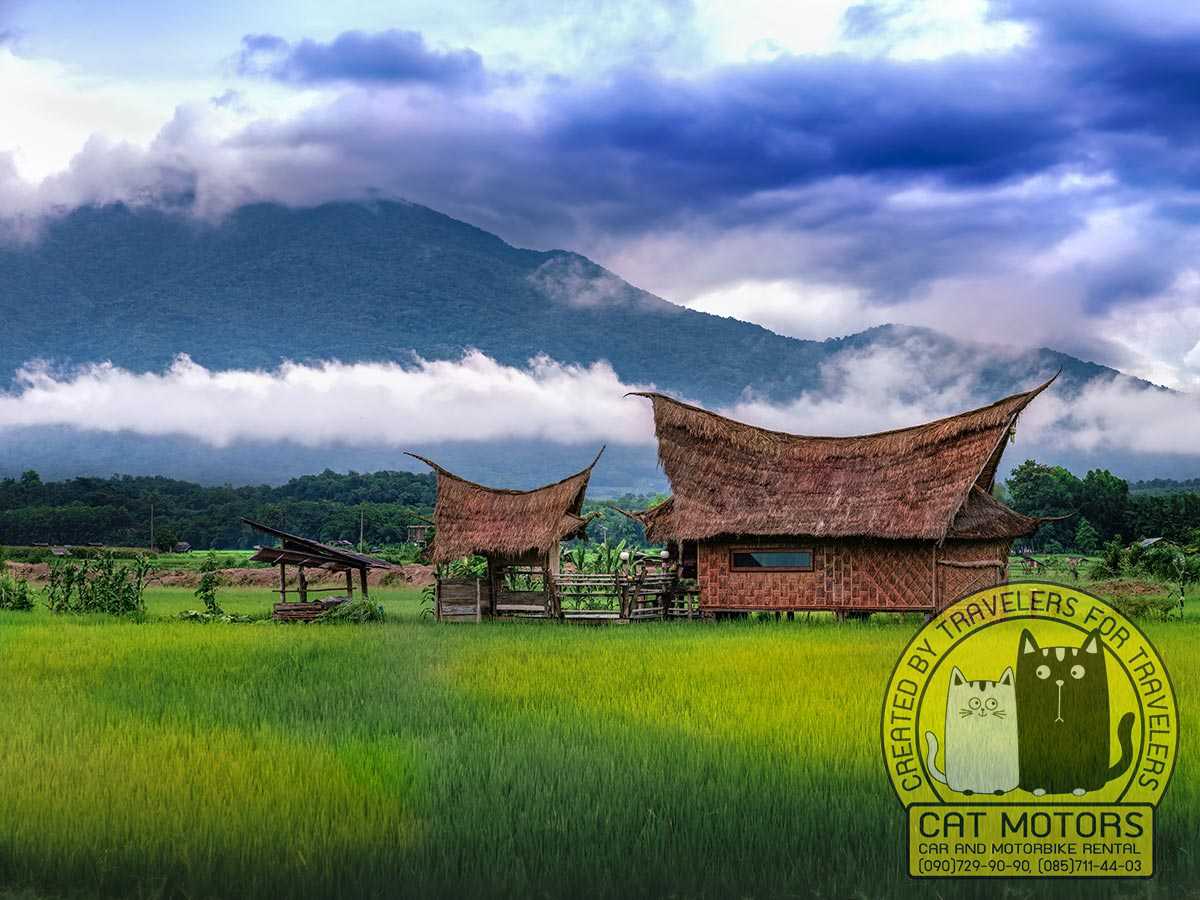
Be prepared to slow down and adjust to Nan’s rhythm. Banks may close early, some restaurants take an afternoon break, people might have a midday nap – and that’s all okay. Independent travelers often find that Nan teaches them to enjoy the present moment. With these practical tips in mind, you’ll be well-equipped to fully enjoy what Nan has to offer. Safe travels – or as the locals say, dee muang Nan, la kon na (travel well in Nan, see you again)!
Weather Forecast
FAQ
Don’t miss out on the Wat Phumin, Nan National Museum, and Wat Phra That Khao Noi for some cultural and historical experience. For nature lovers, Nan’s national parks like Doi Phu Kha and Si Nan are wonderful options.
Are there any public transportation options? A: There are local taxis, known as songthaews, and motorbike taxis for short distances. For exploring the countryside, consider renting a motorbike or bicycle.
Check local listings, but the Nan Boat Race and the Hmong New Year are two major annual events that bring lots of color and excitement to the region.
You should try Khao Soi, a curry noodle soup, and Sai Ua, a spicy sausage. Kanom Jeen Nam Ngiao is a local noodle dish worth a try too!
Traditional hand-woven fabrics and silverware from Nan are beautiful. Handcrafted souvenirs and local organic tea also make great gifts.
The best time to visit Nan is during the cool season from November to February. The weather is very pleasant for exploring the outdoors.
Wat Phumin is in the heart of Nan City and can be reached by local transportation. Remember to dress respectfully as it’s a place of worship.
Nan offers excellent hiking in its national parks. Biking tours are also popular around the city and countryside.
There are a variety of guesthouses and homestays in Nan that can give you a taste of local life. They range from city locations to more rural settings.
Remember to wai (a Thai greeting), remove your shoes before entering a home or temple, and dress modestly, especially at religious sites.
The Nan National Museum is a must-visit for history buffs. Also, the ancient temples like Wat Phra That Chang Kham and Wat Phra That Chae Haeng are rich in history.
Nan Morning Market and Nan Night Food Market are great places to taste local delicacies and observe daily life.
Embark on an adventure through Northern Thailand with our comprehensive travel guides, which showcase the best scenic routes and local highlights. Start your journey by visiting our motorbike rental in Chiang Mai homepage and review our terms and conditions for a smooth rental experience. With these resources, you can confidently explore mountain trails and charming villages.
Our travel advice sections offer essential tips on staying safe and enjoying your trip to the fullest. Discover the best times to visit popular attractions, experience local festivals, and handle different road conditions. These tips will make your journey richer and more enjoyable. Join us in exploring the breathtaking landscapes and vibrant culture of Northern Thailand, ensuring a safe and memorable adventure.
- Author: Natcha Lindberg
- Updated: 15/09/2025
- No Comments




